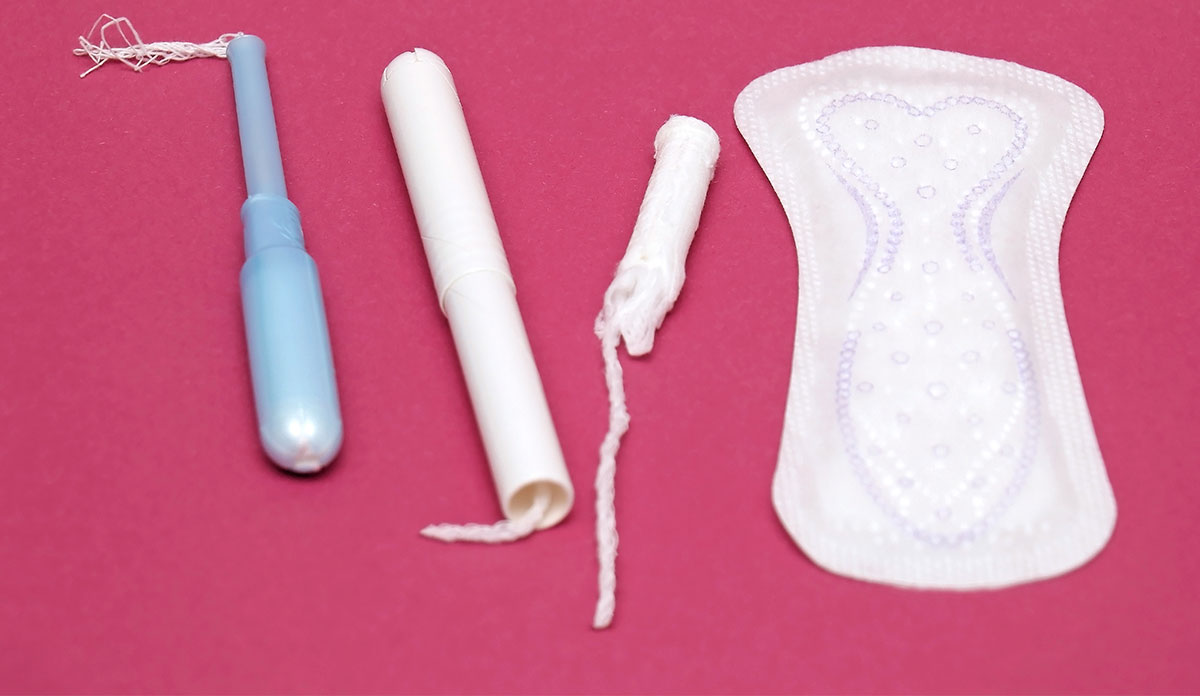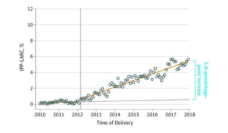What occurs for 4-8 days, every single month, over the course of nearly 40 years? Menstruation. Enduring roughly 450 periods over a lifetime requires a lot of product – as much as 17,000 pads and tampons. Despite the high and necessary use of menstrual products, the chemicals in them largely remain a mystery.
A research team from New York University measured the concentrations of several endocrine disrupting chemicals (EDCs) in menstrual products. EDCs encompass a large group of compounds that can interfere with our hormones and cause harm throughout the body. The researchers collected 77 different menstrual hygiene products in Albany, NY, representing 47 popular brands. The products were grouped into seven categories: pads, panty liners, tampons, wipes, bactericidal creams and solutions, deodorant sprays, and powders.
More than 90% of menstrual products contained measurable concentrations of one type of EDC known as phthalates. Phthalates are commonly used in production to make plastics more flexible. The highest levels were found in panty liners, tampons, and pads.
Limited information exists about the human health effects of phthalate exposure. However, some studies suggest it is linked to recurrent pregnancy loss and disruptions to puberty. Phthalates can also adversely affect hormone levels and thyroid function.
Dr. Kannan notes, “We do not want to alarm consumers,” but he stresses regulatory authorities must be informed and encouraged to set limits based on available scientific data.
The research results raise an important question: Are the phthalate levels in menstrual products cause for alarm? According to study author Dr. Kurunthachalam Kannan, the risk to consumers is unknown because no legal limits exist for how much phthalate is allowed in menstrual products. Dr. Kannan notes, “We do not want to alarm consumers,” but he stresses regulatory authorities must be informed and encouraged to set limits based on available scientific data.
Currently pads and tampons are regulated by the FDA, which classifies them as “medical devices.” This means manufacturers are not required to disclose ingredients on their packaging. Even manufacturers who know what harmful chemicals are in their menstrual products have no obligation to share that information with consumers.
The US does restrict phthalate levels in other goods such as children’s toys. So why not for menstrual products? Legislators attempted to address this gap by introducing the Tampon Safety and Research Act of 1997. The Act advocated for increased research on the additives in menstrual products and their associated health risks.
Unfortunately, the Tampon Safety and Research Act never passed. A similar House bill was later introduced in 2001. Again in 2003. And again in 2005, 2007, 2011, and every two years since then.
If government won’t take action, is there anything consumers can do? Writing to local representatives can bring the issue to the attention of policy makers and bolster support for future legislation. Additionally, many companies now sell menstrual products claiming to be “non-toxic” and “chemical-free.” However, the chemicals in these products are also unknown, even as they offer consumers alternative options, often at higher prices.
Menstruation necessitates the purchase of thousands of menstrual products for decades of a person’s life. Consumers deserve more transparency and research investment to know about their possible long-term exposure to harmful compounds.














